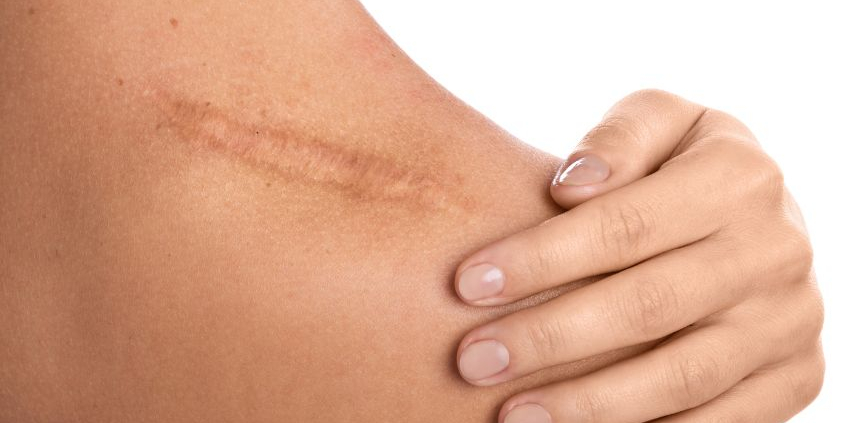Scar Discolouration After Surgery
Scarring is a natural part of the healing process after any surgery, including cosmetic procedures. Most people expect that a scar will slowly fade away, but this isn’t always the case.
Sometimes, scars can darken and become more visible. This is known as scar discolouration, and while it’s usually harmless, it can feel frustrating when you’ve gone through surgery to feel more confident in your appearance.
In this blog, we’ll break down what scar discolouration is, why it happens, and what you can do to help your scars settle in the best possible way over time.
What is Scar Discolouration?
Scar discolouration refers to any change in colour that makes a scar stand out more than it would if it faded normally. This can include redness, purplish tones, or areas where the scar appears darker (hyperpigmentation) or lighter (hypopigmentation) than the surrounding skin. For some people, the colour change is temporary, while for others, it can be more persistent.
It’s important to remember that all scars go through phases of healing. In the early weeks, it’s completely normal for a scar to look pink, red, or even slightly raised. This is simply your body’s way of repairing the skin and producing new tissue. Over time, scars usually soften and fade, but the timeline can vary from person to person, and so can the final result.
Why Does It Happen?
There are a few key reasons why scar discolouration happens, and most of them are linked to how your body heals and external factors that affect the healing process.
One of the biggest causes is sun exposure. Fresh scars are especially sensitive to UV rays, which can trigger an increase in melanin (the pigment in your skin) and cause the scar to darken more than the surrounding skin. This is why sun protection is such a big part of post-operative care, especially during the first 6-12 months when scars are still maturing.
Even if a scar looks healed, deeper layers of the skin may still be developing, and exposure to sunlight too soon can lead to long-term discolouration.
Skin type and tone also play a role. People with darker skin tones are more likely to develop hyperpigmented scars, while those with lighter skin may experience redness that takes longer to fade. Genetics, overall health, and how your body responds to injury can all influence the way scars heal.
Another factor is irritation or tension on the scar. If a wound is healing under too much pressure, either from movement, tight clothing, or poorly positioned incisions, it can lead to thicker, darker scars. Infections, delayed healing, or picking at scabs can also increase the risk of discolouration.
Supporting Healthy Scar Healing
The good news is that there are several ways to support healthy scar healing and reduce the risk of long-term scar discolouration.
First, follow your surgeon’s aftercare advice carefully. This may include keeping the area clean, avoiding strain or friction on the incision site, and using medical-grade silicone gels or dressings. These products can help flatten and soften scars over time, and they’re especially helpful in the early stages of healing.
Second, continue protecting your scars from the sun, even after the initial recovery period. Using a high-SPF sunscreen or keeping scars covered when outdoors can go a long way in preventing pigmentation problems down the line.
And finally, be patient. Scars can take up to a year, or even longer, to fully mature. What looks red or raised at three months may look completely different by month twelve. If you’re concerned about how your scars are healing or notice any unusual changes, Mr Nigel Horlock is always happy to review your progress and offer tailored advice.
While scar discolouration is a common part of healing, it doesn’t have to define your results. With good care and the right support, most scars fade beautifully over time, allowing you to enjoy the benefits of your surgery with confidence.



